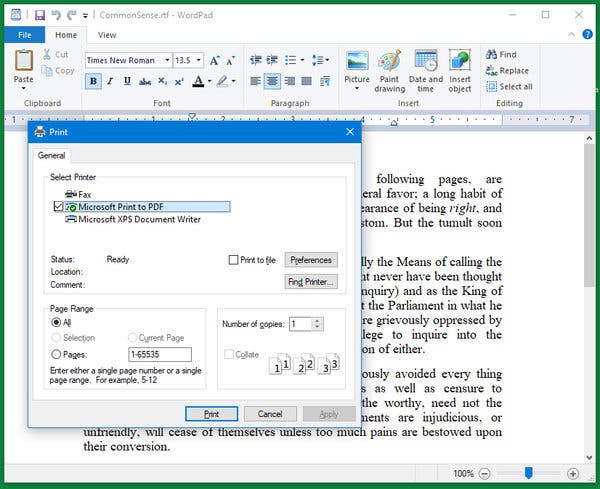How to Open an RTF File
How to Convert an RTF File
More Information on the RTF Format
You can store rich, formatted text in an Access database by using a Long Text (also called Memo) field and setting the field's TextFormat property to RichText. For example, you can make the text bold or underlined, apply different fonts to individual words or characters, and change text colors. You can apply formatting to all or part of the contents of the field when the field is displayed in a datasheet and by editing the field through a bound control in a form or report.
In this article
What is rich text?
Rich text is text that is formatted with common formatting options, such as bold and italics, that are unavailable with plain text. You format your data by using common formatting tools, such as the Ribbon and the Mini Toolbar. Behind the scenes, Access applies Hypertext Markup Language (HTML) formatting code to your data. Access uses HTML because it provides a greater degree of compatibility with rich-text fields stored in SharePoint lists.

Access stores rich text by using the Long Text data type, which is the only data type that has built-in support for rich text. To create a field for storing rich text, you create a Long Text field and then set that field's TextFormat property to RichText. The two possible values are:
- RichText Enables rich text and is stored and interpreted as rich HTML markup.
- PlainText Enables plain text and is interpreted as plain text.
You set the TextFormat property for the Long Text field in table in Datasheet View and Design View. After you store rich text in a Long Text field, you can display it in a form or report by using a text box control. The text box control has a TextFormat property that inherits its initial value from the TextFormat property of the Long Text field. However, you can change the TextFormat property on the text box control.
The following table shows supported rich text formatting options:
Icon | Option | Description |
|---|---|---|
Font name | Selects a different typeface. | |
Font size | Selects a font size. | |
Bold | Makes the selected text bold. If the text is already bold, removes the bold. | |
Italic | Makes the selected text italic. If the text is already italic, removes the italic. | |
Underline | Makes the text underlined. If the text is already underlined, removes the underline. | |
Align left | Aligns the text against the left margin. | |
Center | Centers the text within the margin. | |
Align right | Aligns the text against the right margin. | |
Numbering | Begins numbering paragraphs. The number appears prior to each paragraph. | |
Bullets | Begins placing a bullet before each paragraph. | |
Font color | Selects a font foreground color. | |
Text highlight color | Makes text look like it was marked with a highlighter pen. | |
Decrease indent | Decreases the paragraph indentation. | |
Increase indent | Increases the paragraph indentation. | |
Left-to-right | Fills control from left to right. | |
Right-to-left | Fills control from right to left. |
Create a rich text field
You can create a rich text field in table Datasheet View or Design View.
In Datasheet View
- Open the table in Datasheet View.
- Select Click to Add, and then select Long Text from the list.
- Double click the field header and enter a meaningful name for the new field.
- Save your changes.
In Design View
- Open the table in Design View.
- In the table design grid, locate the first empty row. Then, in the Field Name column, type a field name.
- In the Data Type column, select Long Text.
- Under Field Properties, click the General tab.
- Click inside the Text Format box and select Rich Text.
- Save your changes.
Change a field to rich text
- Open the table that contains the field in Design View.
- In the table design grid, click the Long Text field that you want to change to rich text.
- Under Field Properties, click the General tab.
- Click the Text Format box and select Rich Text.
- Save your changes.
Change a rich text field to plain text
Important When you change a field from rich text to plain text, Access prompts you with a warning that all formatting will be removed. After you have applied the change to plain text and the table has been saved, you cannot undo the change.
